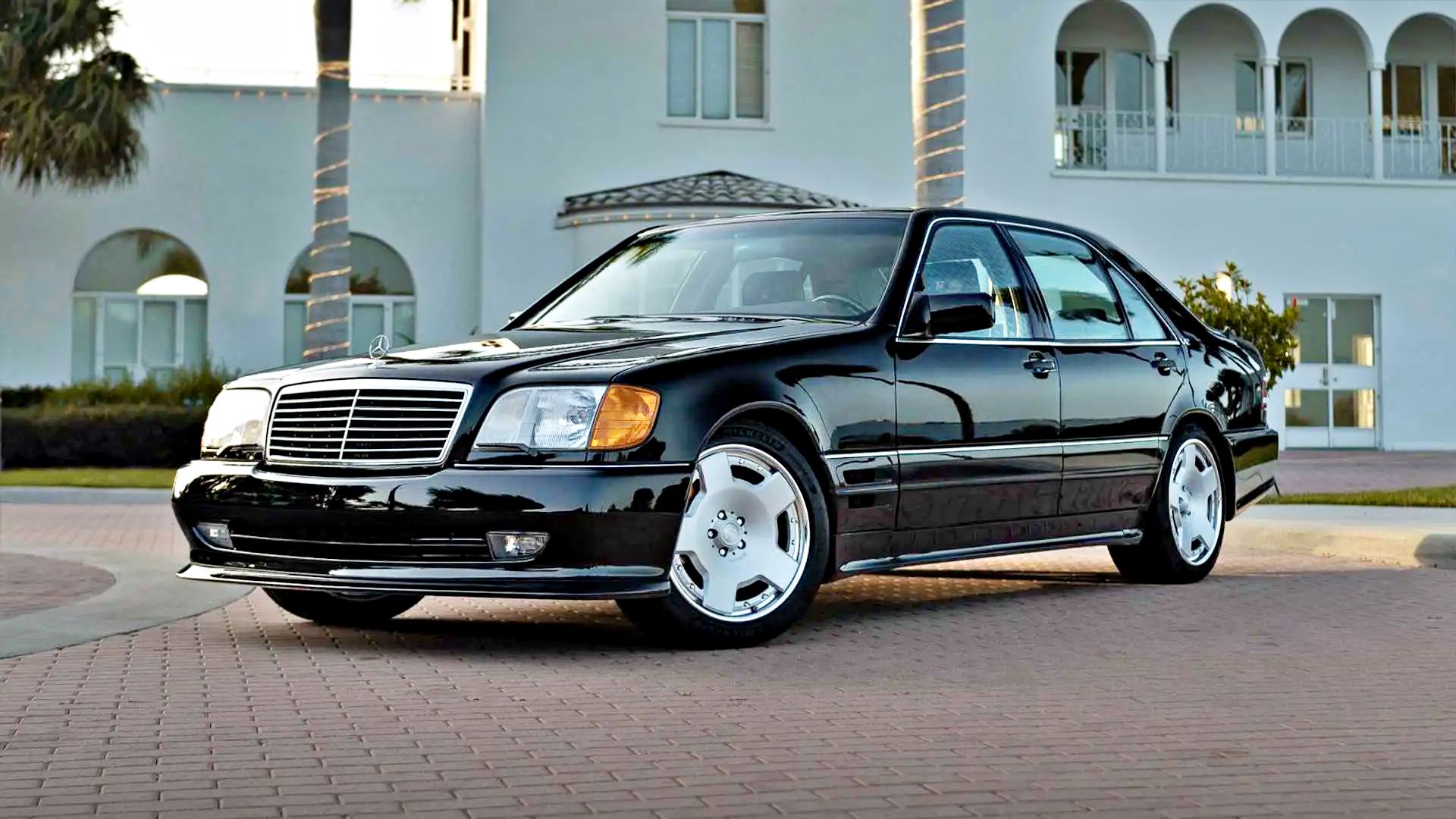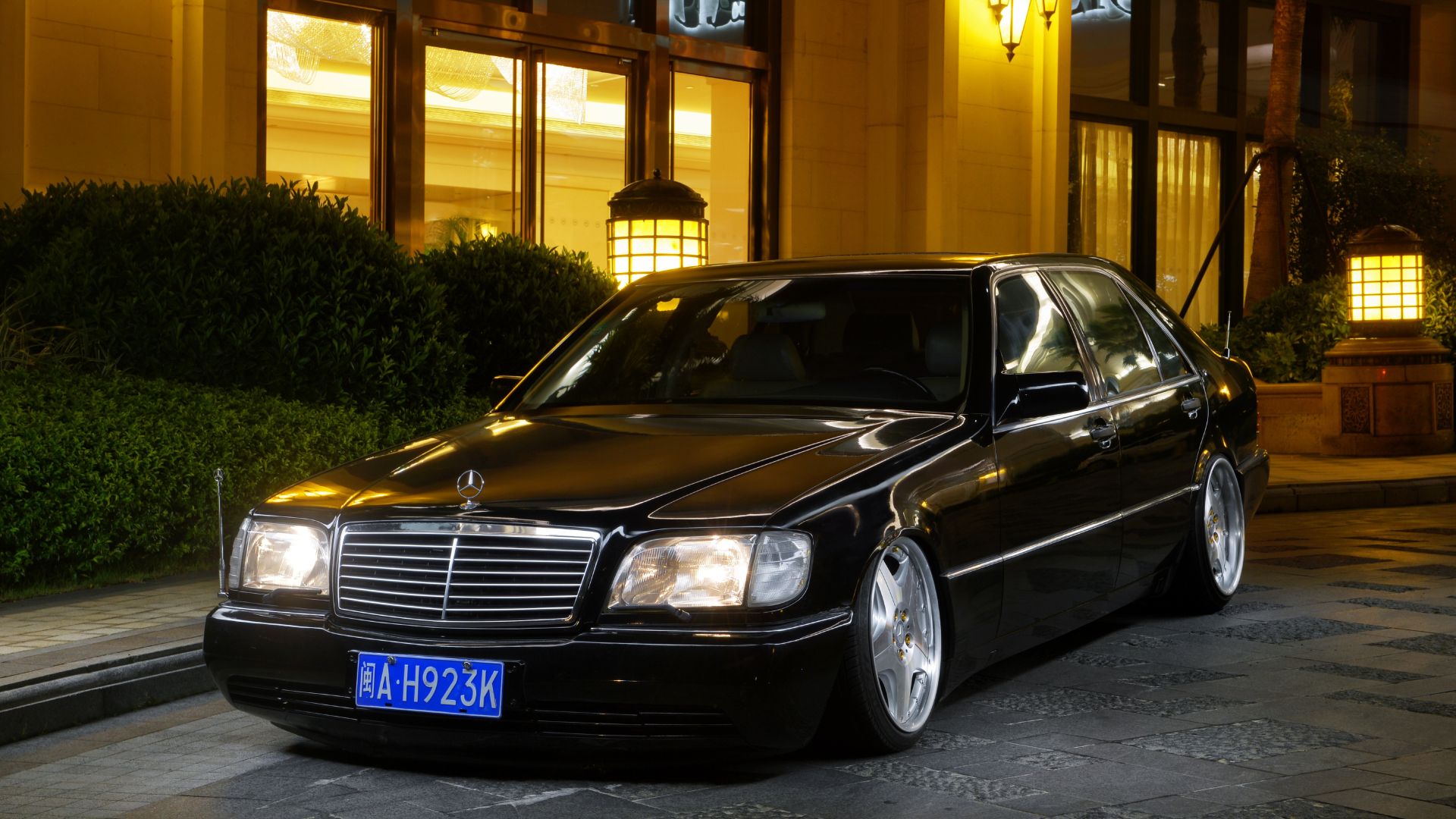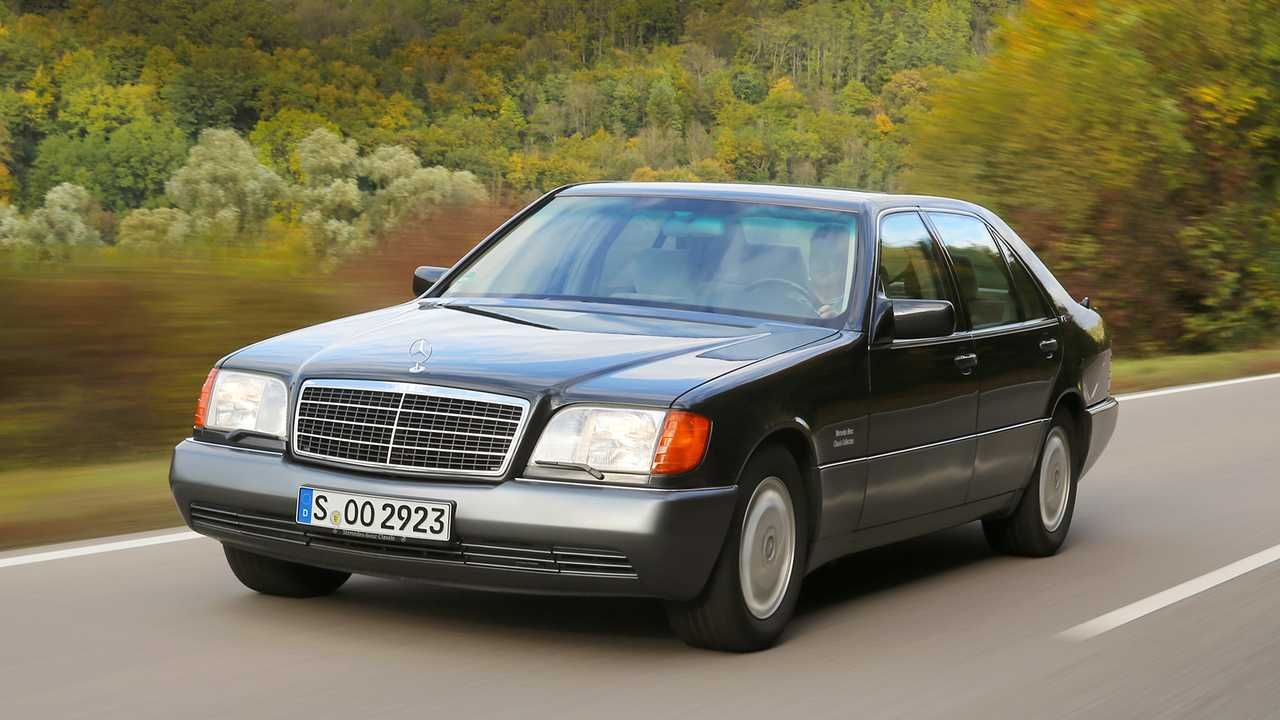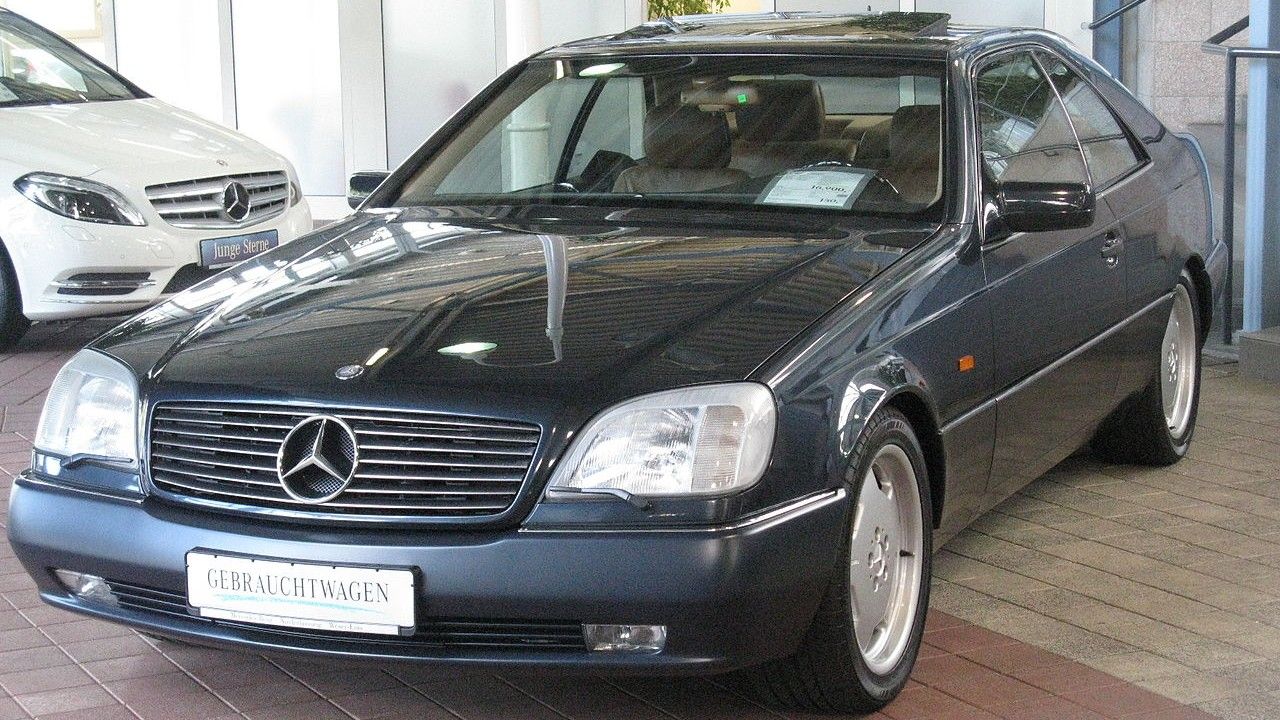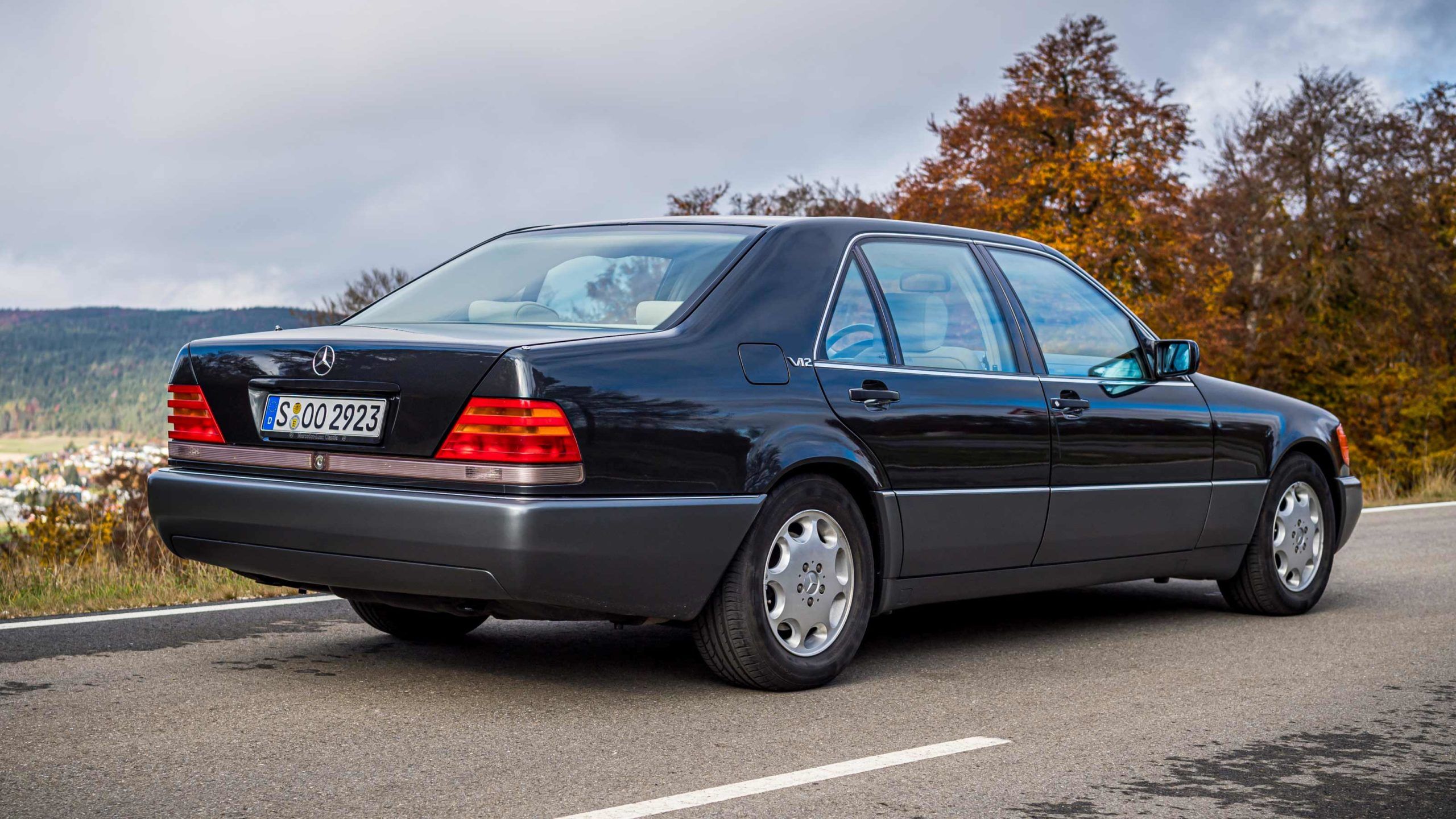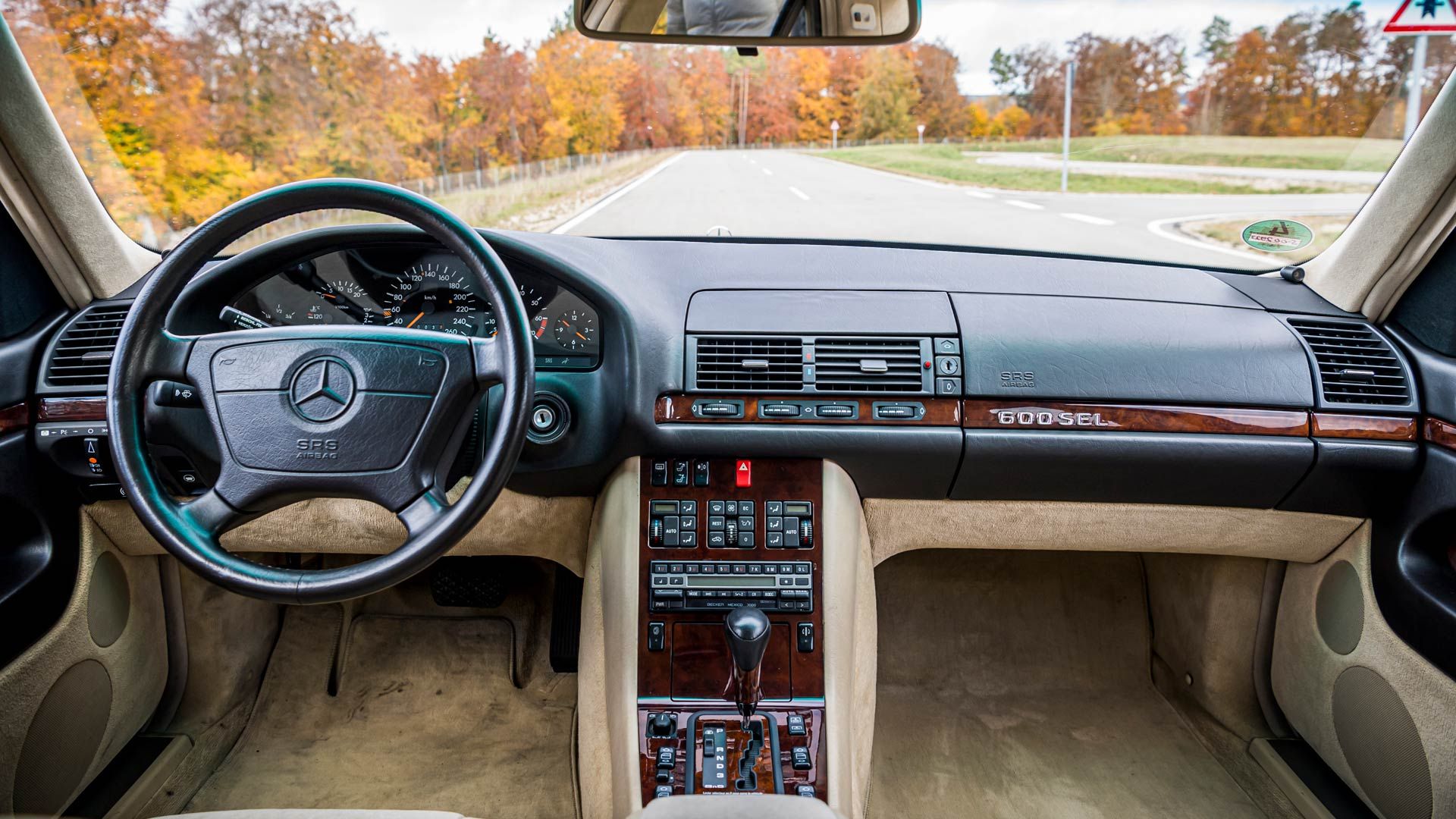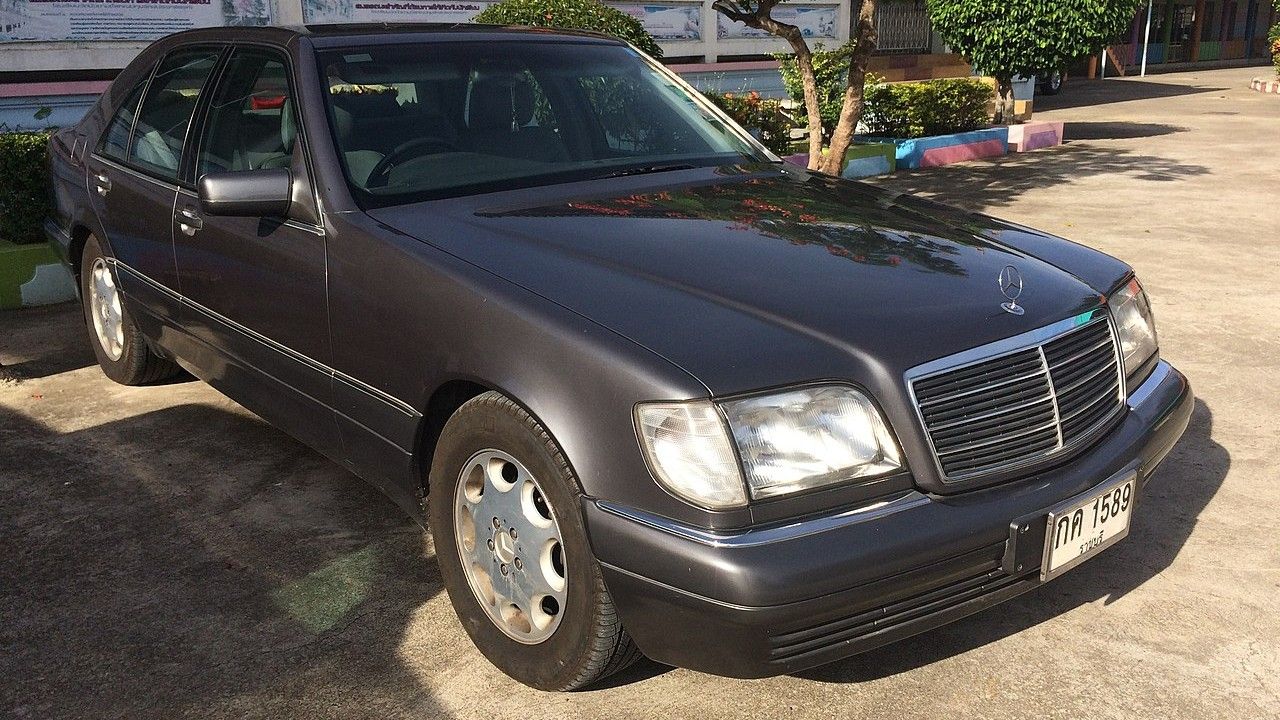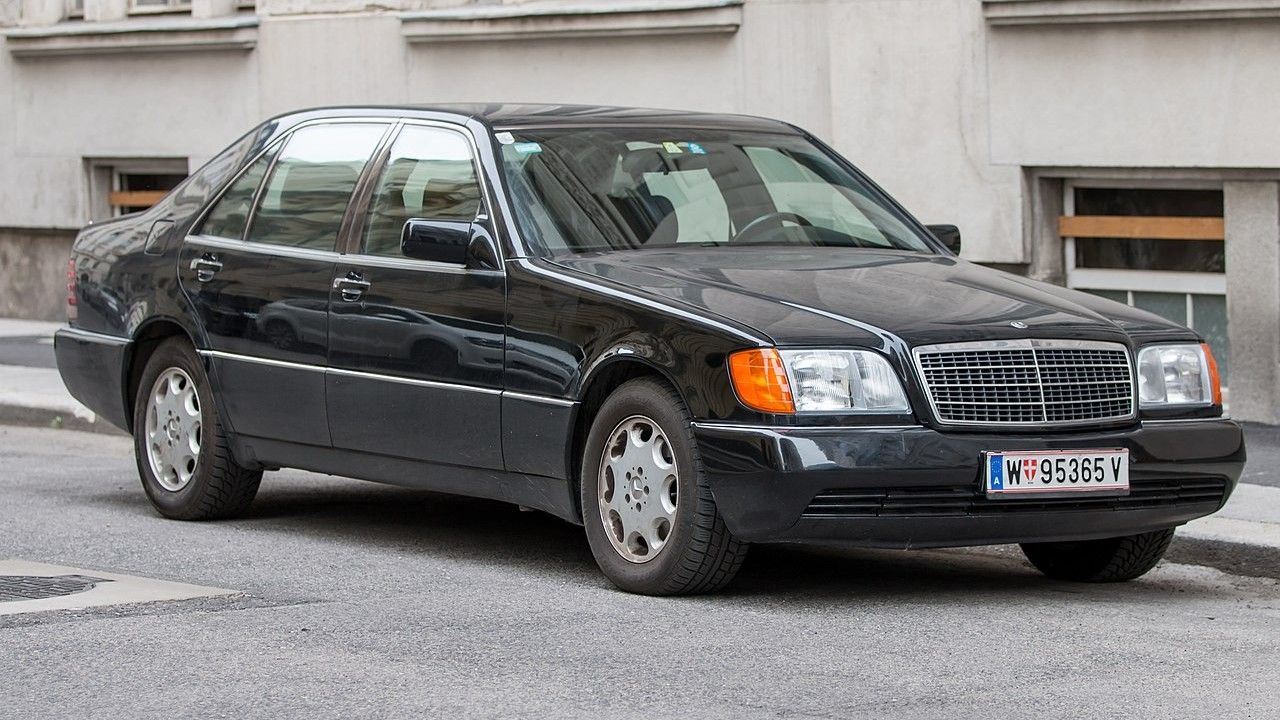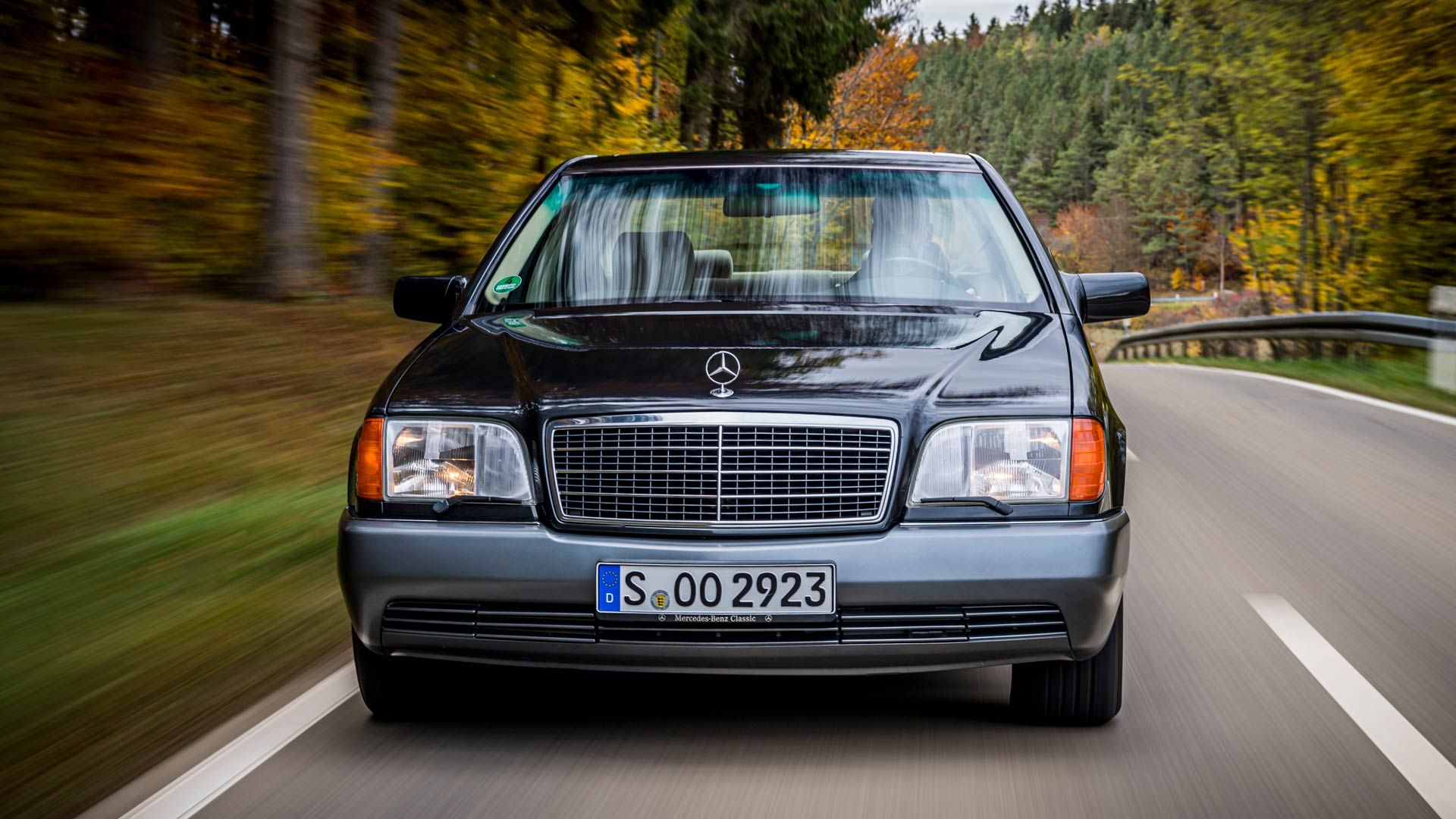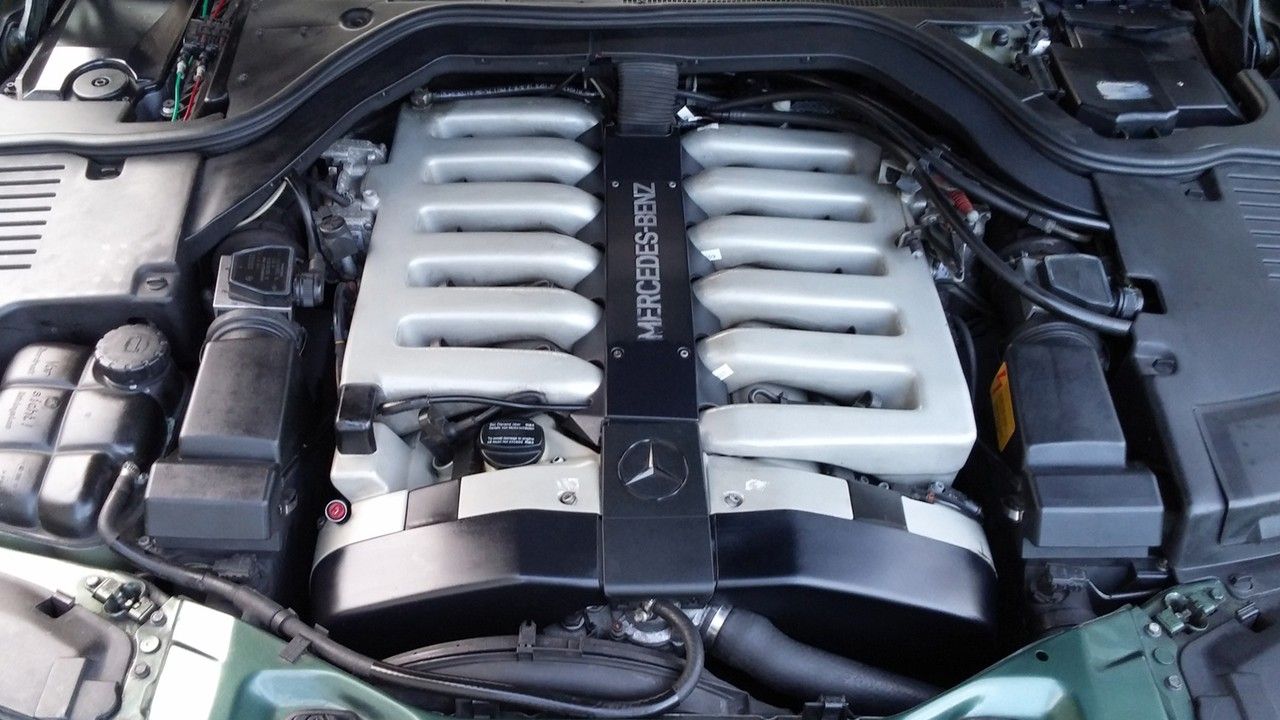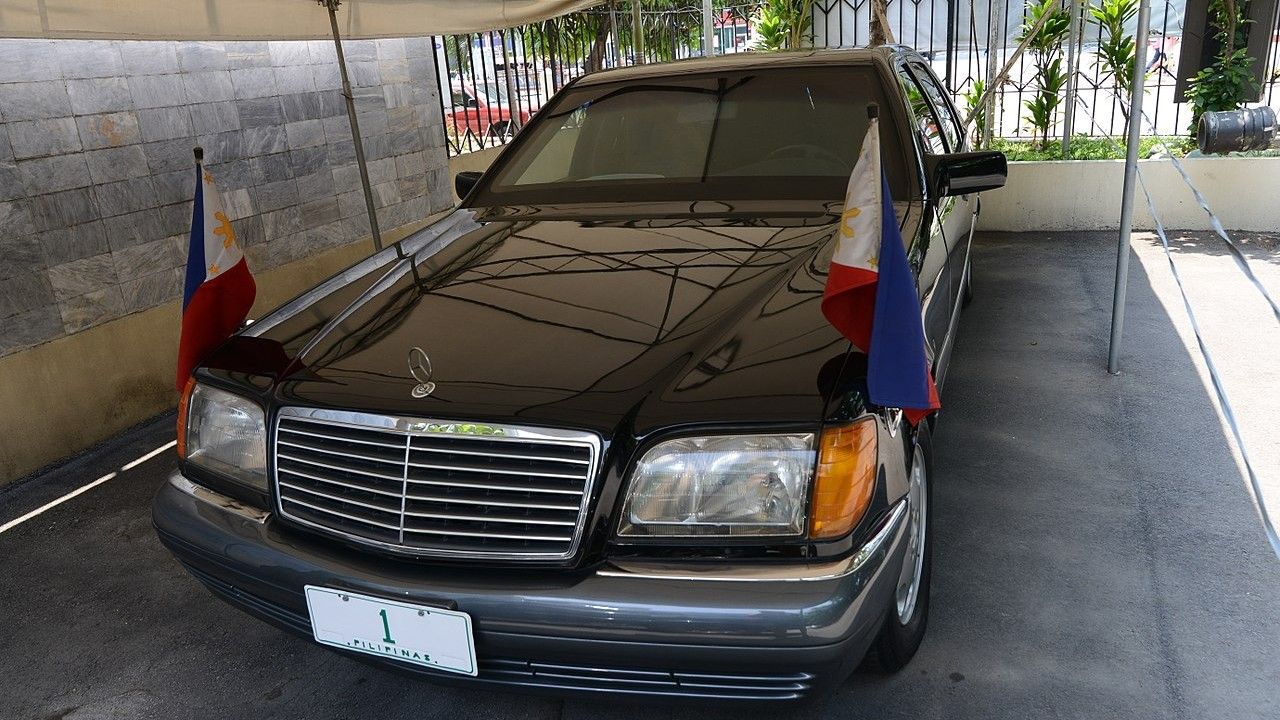Summary
- The Mercedes-Benz W140 is considered one of the last properly built cars and has a near-bulletproof reputation due to its durability and reliability.
- The W140 was known for its luxury features, including a leather interior, wood accents, four-zone climate control, and double-glazed soundproof glass.
- The W140 had several engine options, including a massive 6.0-liter V-12, and was loved by celebrities, state officials, and even mobsters. It also gained attention due to its involvement in the fatal crash of Princess Diana.
When people discuss the Mercedes-Benz W140, phrases like ‘nobody builds cars like that anymore’ inevitably surface. Despite the W140 being somewhat of a flop for Mercedes - it sold nearly 500,000 units from 1991 to 1998 - many consider it one of the last properly built cars by the German brand. It was the last model in the Mercedes lineup built specifically to be the best - not the most profitable or most practical - in its segment.
The generation of the flagship Mercedes sedan is one of the few cars in the automotive world with a near-bulletproof reputation. Even the few haters know deep down that this was a masterpiece - and that the automotive universe will never get a car quite like that ever again. This piece details why the Mercedes-Benz is so revered. Here are 10 things that make the W140 the coolest Mercedes S-Class ever.
10 The Vehicle’s Design Was Somewhat Controversial
One of the downsides of Mercedes’ grand ambitions for the W140 is that to accommodate everything the car needed, the designers had to change the original design as they went. Bruno Sacco, Mercedes-Benz’s chief designer, initially wanted the Mercedes sedan to be drastically more aerodynamically efficient than its predecessor, the boxy and draggy W126. However, as the vehicle’s development dragged on, Sacco’s dream of a slippery form faded - engineers overruled him on several design aspects, including the vehicle’s dimensions (he opined that the W140 was four inches too tall).
With his vision mostly discarded, designer Bruno Sacco partially withdrew from the project - he concerned himself with minutiae details of the car rather than its overall proportions. Consequently, the W140 was taller and wider - and consequently, draggier - than Sacco originally envisioned. Despite failing to meet Sacco’s standards, the W140 was still a handsome car.
9 The W140 Was Durable And Reliable
Durability was at the forefront of the designer’s minds. The idea was to imbue the W140 with durable luxury. Unlike other luxury automakers who went for the shiniest or glossiest materials, Mercedes chose the best and most dependable materials and parts. Mercedes customers who spent fortunes purchasing the W140 bought durable vehicles, some of which run reliably today, over two decades after production ended.
Mercedes W140 prototypes were driven more than 1.8 million miles partly to test their reliability. You may have to deal with a few electrical gremlins if you purchase one today. However, compared to other S-Class models, the seems bulletproof. For instance, its successor, the W220 generation, was designed with a fraction of the W140’s development budget. The result of Mercedes’ frugal ways was a vehicle that was far less reliable than its predecessor.
8 The Pullman And Coupe W140s Are Future Classics
The W140 sedan is by far the most popular W140 variant. However, the coupe and the Pullman are excellent cars in their own right - and significantly rarer than the sedan. Only about six percent of the cars made were coupes; Pullman numbers were lower. Besides its two-door construction and unique front fascia, the coupe wasn’t much different from the sedan. However, it didn’t sell as much as the sedan for some reason.
The Pullman, with its six seats and four doors, was a stretched version of the long-wheel-base model. The limo version had more luxuries than a coupe or sedan, including a glass partition between the front and rear cabin, a separate stereo for rear occupants, and curtains, among others. Due to their rarity and the W140’s superior build quality, the couple and Pullman are classics in waiting.
7 The W140 Was Environmentally Friendly
In an era when car manufacturers' efforts to conserve the environment involved emission reductions, Mercedes raised the bar to a hitherto unknown level with the W140. For instance, the top-spec Merc eschewed the use of the commonly-used R12, which was harmful to the Ozone layer, as its air-con refrigerant. The vehicle’s air-con refrigerant was the chlorofluorocarbon-free R134a, which was much friendlier to the environment.
Also, Mercedes designed the this generation of the S Class knowing that though it would be reliable, a significant chunk of the vehicles would perish. Therefore, Mercedes marked the vehicle’s plastic components to ease recycling when the need arose. Further, the S Class models featured plastic components made from recycled plastic.
6 The W140 Was An Industry Leader In Terms Of Luxury
Mercedes built the W140 to transport its passengers in absolute luxury. For instance, long-wheel-base variant came with four-zone climate control, while short-wheel-base trim featured dual-zone climate control. Also, V-12’s models had adjustable rear seats, a rear sunshade, and lumbar support. Other luxury features include:
- Leather interior and wood accents
- Vanity mirrors for all passengers
- Powered rearview mirror
- Adjustable side mirrors to facilitate driving through narrow streets
- A Bose sound system
- ‘Soft-closing’ doors
- Double-glazed soundproofed windows
- GPS navigation system, which debuted in the S600 Coupe
- An optional factory-fitted phone
Perhaps the most celebrated luxury innovation of the W140 was double-glazed soundproof glass. Mercedes borrowed the idea of double-paned windows from the housing industry. The manufacturer created double-glazed glass by bonding two glass panes with an adhesive. Double-glazed glass provided better sound insulation and improved the climate control's performance.
5 The W140 Featured A Slew Of Innovations
The W140 featured many automotive innovations, some of which would become ubiquitous in the automotive world. It had an entirely new suspension system - multi-link suspension in the back and double wishbone suspension at the front. The W140s Adaptive Damping System adjusted the shock absorbers to stabilize the vehicle at high speed.
Also, the this generation of the S-Class pioneered the Electronic Stability Program (ESP) system that detected potential losses of car control and manipulated braking performance to prevent an accident. The ESP system gradually became a regular feature in the car world. Other innovations included:
- Xenon High-intensity headlights.
- Seat sensors and side airbags.
- Automatic windshield wipers.
- Self-leveling suspension.
Most of these innovations were successful. Others drew ridicule, none more so than the rear-parking guide rods. Two metal rods extended from the trunk's corners to help the driver gauge the distance between the vehicle's rear and an obstacle when parking. They were inefficient and absurd, which Mercedes belatedly realized. In 1995, Mercedes replaced the parking rods with a sonar-based reversing system.
4 Mercedes Reportedly Spent $1 Billion Developing The W140
Mercedes reportedly dedicated $1 billion to the development of the W140. The project began in the early 1980s, with the aforementioned Bruno Sacco spearheading the vehicle’s design. It took more than half a decade for the designers to settle on the final design. Sacco and French car designer Olivier Boulay borrowed design cues from the Jaguar XJ and the BMW 7 Series, the S Class' main competitors. Developments at BMW forced Mercedes to delay the W140’s debut by eighteen months.
The delay and the costs incurred by the extended development of the flagship full-size sedan reportedly forced the departure of Mercedes’ chief engineer Wolfgang Peter. Despite spending a colossal research and development fortune, Mercedes spared no expense when marketing the W140. It shot the vehicle’s marketing film using the Showscan process, ignoring the fact that there were few projectors capable of projecting the footage.
3 Mercedes Offered Several W140 Engines
Engines ranged from a 2.8-liter inline-six engine to a humongous 6.0-liter V-12. All engines were developed specifically for that model, except the 3.5-liter turbocharged diesel engine, which Mercedes carried over from the outgoing model. The engines were innovative, featuring double-overhead camshafts and variable valve timing. The tech improved power output while reducing consumption and emissions.
In the mid-1990s, Mercedes developed a 3.0-liter turbo-diesel engine for the. The wide range of W140 engines exposed the vehicle to a broader market. However, despite the many options available, it was outdone by the cheaper Lexus LS, which many customers in the luxury segment opted for.
2 One Of The Engine Options Was A Massive 6.0-Liter V-12
The crown jewel was the 6.0-liter V-12, the first mass-produced Mercedes V-12. The V-12’s development was one of the reasons behind the delayed W140 debut. BMW’s release of a V-12 7 Series engine in the mid-1980s stunned Mercedes, prompting the development of Merc’s own V-12. It forced the manufacturer to redesign the W140’s engine bay and develop stronger brakes.
The flagship S Class could have had a V-16 engine as Mercedes responded to reports that BMW was building a V-16 for its 7 series. Reports claim that Mercedes engineers also tabled the idea of an 8.0-liter W-18 engine for the S-Class! Ultimately, emissions restrictions halted what would have been a fascinating engine race between two top German manufacturers.
1 It Was Loved By Celebrities And State Officials
The people who owned the W140 gave the vehicle an infinite amount of cool points. Michael Schumacher, in many eyes the greatest F1 driver of all time, owned one, and so did entertainers like Madonna, Chris Tarrant, and Penélope Cruz. The sedan's hubris endeared it to rappers like 50 Cent and Tupac Shakur; its size and grandeur made it a favorite among dictators, including Vladimir Putin, and mobsters, including the Yakuza and the Albanian Mafia.
The Mercedes icon also found a place in conspiracy theory narratives following its role in the fatal crash that killed Princess Diana. Nobody knows what exactly happened that night in Paris. Nevertheless, a popular assertion claims that she would have survived had she worn a safety belt.

